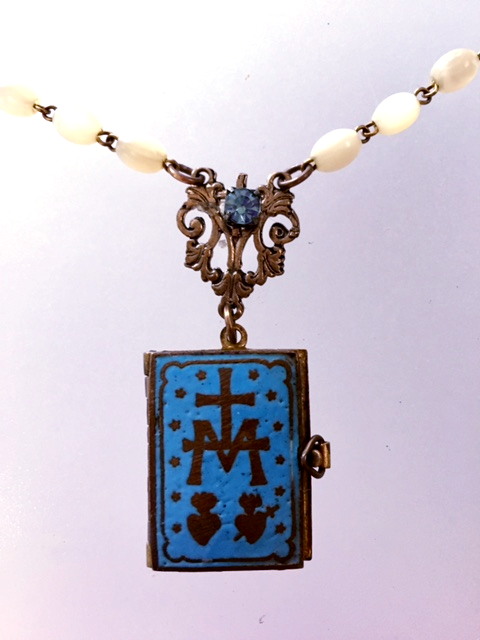
The French Guillotine, an interesting and horrible time in French history.....
We are offering two Men's Cigar Cutter Necklaces in the French Guillotine Style....
A Bientot ! !
Lynn
For Artisan Jewelry and French antiques, please visit us at:
www.FrenchAtHeart.com Studio now open by appointment!
(714) 310-0702
Lynn Konrad
8422 Crane Circle
Huntington Beach, Ca. 92646
Lynn@FrenchAtHeart.com
The guillotine was a device used for carrying out
executions by
decapitation. It consisted of a tall upright frame from which a
blade is suspended. This blade is raised with a rope and then allowed to drop, separating the head from the body. The device is noted for long being the main method of execution in
France and, more particularly, for its use during the
French Revolution, when it "became a part of popular culture, celebrated as the people's avenger by supporters of the Revolution and vilified as the pre-eminent symbol of
the Terror by opponents". Nevertheless, the guillotine continued to be used long after the French Revolution in several countries.
A committee was formed under
Antoine Louis, physician to the King and Secretary to the Academy of Surgery
Joseph-Ignace Guillotin, a professor of anatomy at the faculty of medicine in Paris, was also on the committee. The group was influenced by the Italian Mannaia (or Mannaja), the
Scottish Maiden, and the
Halifax Gibbet. While these prior instruments usually crushed the neck or used blunt force to take off a head, device also usually used a crescent blade and a lunette (a hinged two part yoke to immobilize the victim's neck).
Laquiante, an officer of the
Strasbourg criminal court[
citation needed], made a design for a beheading machine and employed Tobias Schmidt, a
German engineer and
harpsichord maker, to construct a prototype. Antoine Louis is also credited with the design of the prototype. An apocryphal story claims that King Louis XVI (an amateur locksmith) recommended a triangular blade with a beveled edge be used instead of a crescent blade, but it was Schmidt who suggested placing the blade at an oblique 45-degree angle and changing it from the curved blade. The first execution-by-guillotine was performed on highwayman
Nicolas Jacques Pelletier on April 25, 1792
The basis for the machine's success was the belief that it was a humane form of execution, contrasting with the methods used in pre-revolutionary,
Ancien Régime France. In France, before the guillotine, members of the
nobility were beheaded with a sword or axe (which typically took at least two blows before killing the condemned), while commoners were usually hanged, a form of death that could take minutes or longer. Other more gruesome methods of executions were also used, such as
the wheel,
burning at the stake, etc. In the case of decapitation, it also sometimes took repeated blows to sever the head completely, and it was also very likely for the condemned to slowly bleed to death from their wounds before the head could be severed. The condemned or the family of the condemned would sometimes pay the executioner to ensure that the blade was sharp in order to provide for a quick and relatively painless death.
The guillotine was thus perceived to deliver an immediate death without risk of suffocation. Furthermore, having only one method of execution was seen as an expression of equality among citizens. The guillotine was then the only
legal execution method in France until the abolition of the death penalty in 1981, apart from certain crimes against the security of the state, which entailed execution by
firing squad.




























































